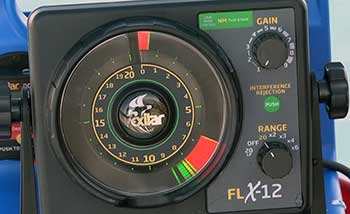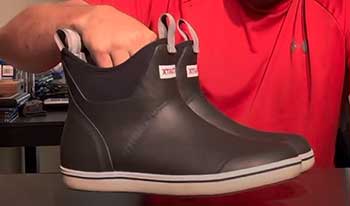I’ve spent countless hours casting lines, tweaking reels, and battling bass, so when it comes to choosing between the Shimano Curado and Daiwa Tatula, I know the stakes.
This article breaks down these two legendary baitcasters, comparing their features, performance, and quirks through my own experiences. My goal?
To help you decide which reel suits your fishing style by weighing their pros and cons with a clear, no-nonsense approach. Whether you’re a weekend angler or a tournament pro, let’s find your perfect match.
A Brief Comparison Table
| Feature | Shimano Curado | Daiwa Tatula |
| Weight | 7.4–7.8 oz (model-dependent) | 6.9–7.7 oz (model-dependent) |
| Gear Ratios | 6.2:1, 7.4:1, 8.5:1 | 6.3:1, 7.3:1, 8.1:1 |
| Bearings | 6+1 (S A-RB) | 7+1 (CRBB in some models) |
| Drag Max | 11–13 lbs | 11–13.2 lbs |
| Braking System | VBS (Centrifugal) | Magforce-Z/SV (Magnetic) |
| Spool Size | Larger (better for heavy baits) | Smaller (ideal for light baits) |
| Frame | Aluminum | Aluminum (some models lighter) |
| Price (Approx.) | $180–$270 | $150–$250 |
| Best For | Heavy baits, durability | Light baits, skipping, finesse |
My Journey With Baitcasters
I remember my first baitcaster like it was yesterday—a clunky hand-me-down that taught me more about backlashes than catching fish. Fast forward to today, and I’m knee-deep in the Shimano Curado and Daiwa Tatula debate, two reels that have earned their stripes in the bass fishing world.
Both are workhorses, but they cater to slightly different styles. I’ve fished both extensively, from calm lakes to windy rivers, and I’m here to share what I’ve learned through sweat, casts, and the occasional lost lure.
Shimano Curado: The Reliable Powerhouse
The Shimano Curado has been my go-to for years, and it’s no surprise why it’s a staple for anglers. Its robust build feels like it could survive a drop off the boat, and it has.
Let’s break down what makes it shine and where it stumbles.
Pros of The Shimano Curado
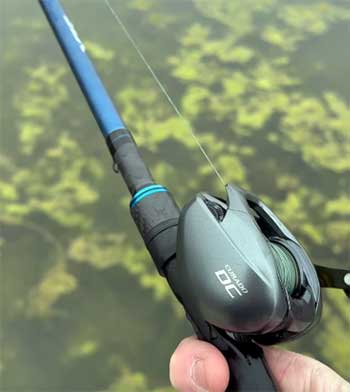
- Durability That Laughs at Harsh Conditions: The Curado’s aluminum frame is a tank. I’ve fished in salty coastal waters and muddy reservoirs, and this reel keeps ticking. Shimano’s X-Ship technology ensures the gears stay aligned, delivering smooth cranking even after months of abuse. I once hooked a 7-pound largemouth that fought like a demon, and the Curado’s drag didn’t flinch.
- Power for Heavy Baits: If you’re slinging big swimbaits or deep-diving cranks, the Curado’s larger spool and sturdy construction are your allies. I’ve thrown 1-ounce jigs with 65-pound braid, and the reel handles the load without breaking a sweat. The drag, rated at 11–13 pounds depending on the model, is buttery smooth, giving you control over hard-pulling fish.
- Centrifugal Braking Mastery: Shimano’s Variable Brake System (VBS) uses centrifugal force to manage spool speed. It’s a dream for long casts with heavier lures. I can bomb a ½-ounce spinnerbait across a windy lake with minimal thumb work. The external dial lets me tweak settings on the fly, which is a lifesaver when switching baits.
- Ergonomic Comfort: Palming the Curado feels natural, like shaking hands with an old friend. The asymmetrical handle design and contoured knobs make all-day fishing sessions a breeze. I’ve spent 10-hour days on the water, and my hand never cramped.
Cons of The Shimano Curado
- Struggles with Light Baits: The Curado’s larger spool isn’t optimized for finesse. Casting ¼-ounce jigs or weightless Senkos often leads to backlashes, even with careful tuning. I’ve had to switch to a spinning setup for ultra-light presentations, which is a bummer when I want to stick with baitcasters.
- Weight Can Wear You Down: At 7.4–7.8 ounces, the Curado isn’t the lightest. After hours of repetitive casting, I’ve felt the strain in my wrist, especially when kayak fishing. If you prioritize featherweight gear, this might not be your first pick.
- Price Creep: The Curado’s price, often $180–$270, can sting. While it’s worth it for the durability, I’ve hesitated to buy multiples when cheaper reels perform nearly as well for casual trips. You’re paying for Shimano’s reputation, and sometimes I wonder if it’s overkill.
- Brake Adjustment Quirks: The VBS system is great but can be finicky. I’ve had to pop open the sideplate to adjust internal brakes more than I’d like, especially when fine-tuning for specific lures. It’s not a dealbreaker, but it’s less convenient than external-only adjustments.
Daiwa Tatula: The Finesse Phenom
The Daiwa Tatula entered my arsenal later, but it quickly earned a spot on my favorite rods. Its sleek design and innovative features make it a standout, though it’s not without flaws.
Pros of The Daiwa Tatula
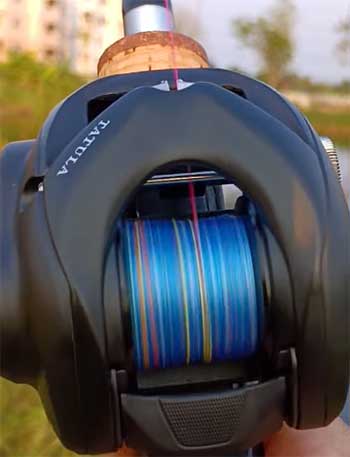
- Light Bait Wizardry: The Tatula’s SV (Stress-Free Versatile) spool and Magforce-Z braking system are game-changers for light lures. I’ve cast 1/8-ounce jigs and tiny crankbaits with ease, even in a stiff breeze. The magnetic brakes adjust smoothly via an external dial, letting me dial in settings without opening the reel.
- T-Wing System for Smooth Casting: Daiwa’s T-Wing System (TWS) reduces line friction during casts, giving me extra distance and accuracy. I’ve skipped baits under docks with precision that makes me look like a pro (even when I’m not). It’s a small design tweak that pays big dividends.
- Lightweight and Nimble: Weighing 6.9–7.7 ounces, the Tatula feels like an extension of my hand. I’ve used it for hours of pitching and flipping without fatigue. The compact 100 and 70 models are perfect for anglers with smaller hands or those who prefer a low-profile setup.
- Value for Money: Priced between $150 and $250, the Tatula often undercuts the Curado while delivering comparable performance. I snagged a Tatula SV TW for $170 on sale, and it’s been a steal for the quality. For budget-conscious anglers, it’s hard to beat.
Cons of The Daiwa Tatula
- Durability Concerns: While the Tatula’s aluminum frame is solid, it doesn’t feel as bombproof as the Curado. I’ve noticed minor wear on the finish after heavy use in saltwater, and some anglers report needing more frequent maintenance. It’s not a dealbreaker, but I baby it more than my Shimano.
- Leader Knot Issues: The T-Wing System, while brilliant, can snag knots when using a braid-to-fluorocarbon leader. I’ve had to re-tie rigs after the knot caught during a cast, which is frustrating mid-fishing. Spooling with straight mono or fluoro avoids this, but it limits versatility.
- Less Power for Big Baits: The Tatula shines with finesse but struggles with heavy loads. I tried throwing a 1.5-ounce swimbait, and the drag felt strained, lacking the Curado’s raw power. If you chase trophy fish with big baits, you might need a beefier reel.
- Maintenance Demands: The Tatula requires more TLC to keep it casting smoothly. I’ve had to clean and lube it more often than my Curado, especially after fishing in sandy or salty conditions. It’s not a huge hassle, but it’s noticeable if you’re used to low-maintenance reels.
Head-to-Head Comparison of Shimano Curado And Daiwa Tatula
Now that I’ve laid out the strengths and weaknesses, let’s compare these reels across key performance areas based on my time with them.
- Casting Performance
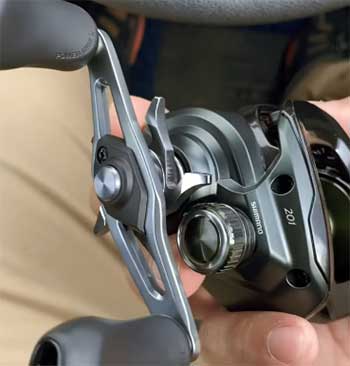
The Curado excels at long-distance casts with heavier baits.
I’ve launched ¾-ounce jigs across wide flats with ease, thanks to the VBS and larger Jaime spool.
The Tatula, however, takes the crown for finesse and precision.
Its SV spool and TWS let me skip ¼-ounce baits under cover like a pro.
If you’re casting into the wind or targeting tight spots, the Tatula’s magnetic brakes give you an edge.
For all-purpose casting, it’s a toss-up—choose based on your bait weight.
- Durability and Build Quality
The Curado feels like it could outlast me. Its gears and frame shrug off abuse, and Shimano’s reputation for longevity holds up in my experience. I’ve dropped it on rocks (oops) and it still cranks smoothly.
The Tatula is no slouch, but its lighter construction makes me question its long-term resilience in brutal conditions. If you fish hard in harsh environments, the Curado has the edge.
- Comfort and Ergonomics
Both reels are comfortable, but the Curado’s contoured handles and palm-friendly design make it my pick for marathon sessions. The Tatula’s lighter weight and compact frame are great for quick, repetitive casts, especially in tight quarters.
I’ve let friends with smaller hands try both, and they gravitated toward the Tatula’s low-profile feel. It’s a close call—try them in a store if you can.
- Drag and Power
The Curado’s drag, rated at 11–13 pounds, is smoother and more reliable for big fish. I’ve pulled in 6-pound bass and even a 10-pound catfish without hiccups. The Tatula’s drag, while solid at 11–13.2 pounds, feels less confident with heavy loads.
For power fishing with big baits or heavy cover, the Curado wins. The Tatula is better for finesse techniques where drag precision matters less.
- Price and Value
The Tatula often costs $20–$50 less than the Curado, making it tempting for budget shoppers. I’ve found the Tatula’s performance rivals reels twice its price, especially for light bait applications.
The Curado’s higher cost feels justified by its durability and versatility, but it’s not a must-have for casual anglers. If you’re pinching pennies, the Tatula delivers more bang for your buck.
Real-World Scenarios: Which Reel For What?
To make this practical, let’s look at how I’ve used these reels in specific situations.
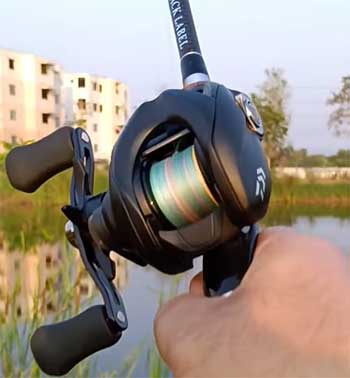
- Scenario 1: Bass Fishing in Heavy Cover: I’m flipping jigs into thick lily pads, targeting big bass. The Curado’s power and stout drag let me horse fish out of cover without hesitation. Its larger spool handles 65-pound braid like a champ. The Tatula, while capable, feels less confident with heavy line and big baits. Winner: Curado.
- Scenario 2: Skipping Baits Under Docks: I’m targeting spooky bass under docks with a ¼-ounce jig. The Tatula’s SV spool and TWS make skipping a breeze, with minimal backlashes even in windy conditions. The Curado struggles here, as its heavier spool demands more thumb control. Winner: Tatula.
- Scenario 3: All-Purpose Lake Fishing: I’m on a lake, switching between spinnerbaits, crankbaits, and Texas rigs. Both reels perform well, but the Curado’s versatility across bait weights gives it a slight edge. I can throw a ½-ounce spinnerbait or a 1-ounce jig without retuning. The Tatula shines with lighter baits but requires more tweaking for heavier ones. Winner: Curado (barely).
My Personal Take: Which One’s For You?
After years of fishing both, I lean toward the Curado for its reliability and power. It’s my desert island reel—versatile enough for most situations and tough enough to last. But the Tatula has won me over for finesse work.
Its ability to cast light baits and skip like a dream makes it a specialized tool I can’t ignore. Your choice depends on your fishing style:
- Choose the Curado if: You fish heavy baits, prioritize durability, or want a do-it-all reel for tough conditions.
- Choose the Tatula if: You focus on finesse, love skipping baits, or want a lightweight reel that’s easy on the wallet.
Also Read: Is Obalus Baitcast Reel Any Good?
Frequently Asked Questions (FAQ)
The Tatula 150 is great for medium to heavy baits like jigs, Texas rigs, and larger crankbaits. It’s ideal for all-purpose bass fishing and handles bigger fish well.
The Curado 150 MGL is often praised for its balance of lightweight design and versatility, excelling with both light and heavy lures for bass fishing.
The Tatula 200 is built for heavy-duty tasks like throwing big swimbaits, deep crankbaits, and punching through thick cover, perfect for targeting trophy fish.
The Shimano Curado’s drag rating varies by model, typically ranging from 11 to 13 pounds, offering smooth and reliable performance for most bass fishing scenarios.
Conclusion: Your Reel, Your Choice
I’ve laid out my experiences with the Shimano Curado and Daiwa Tatula, and now it’s your turn to decide. Both reels are phenomenal, but they cater to different anglers.
If you crave a bulletproof workhorse that tackles heavy baits and harsh conditions, the Curado’s your pick. If finesse, light lures, and budget-friendly performance are your game, the Tatula’s got your back.
You can’t go wrong, so grab the one that matches your style and hit the water. Let me know in the comments which you’re leaning toward—I’m curious to hear your take!
